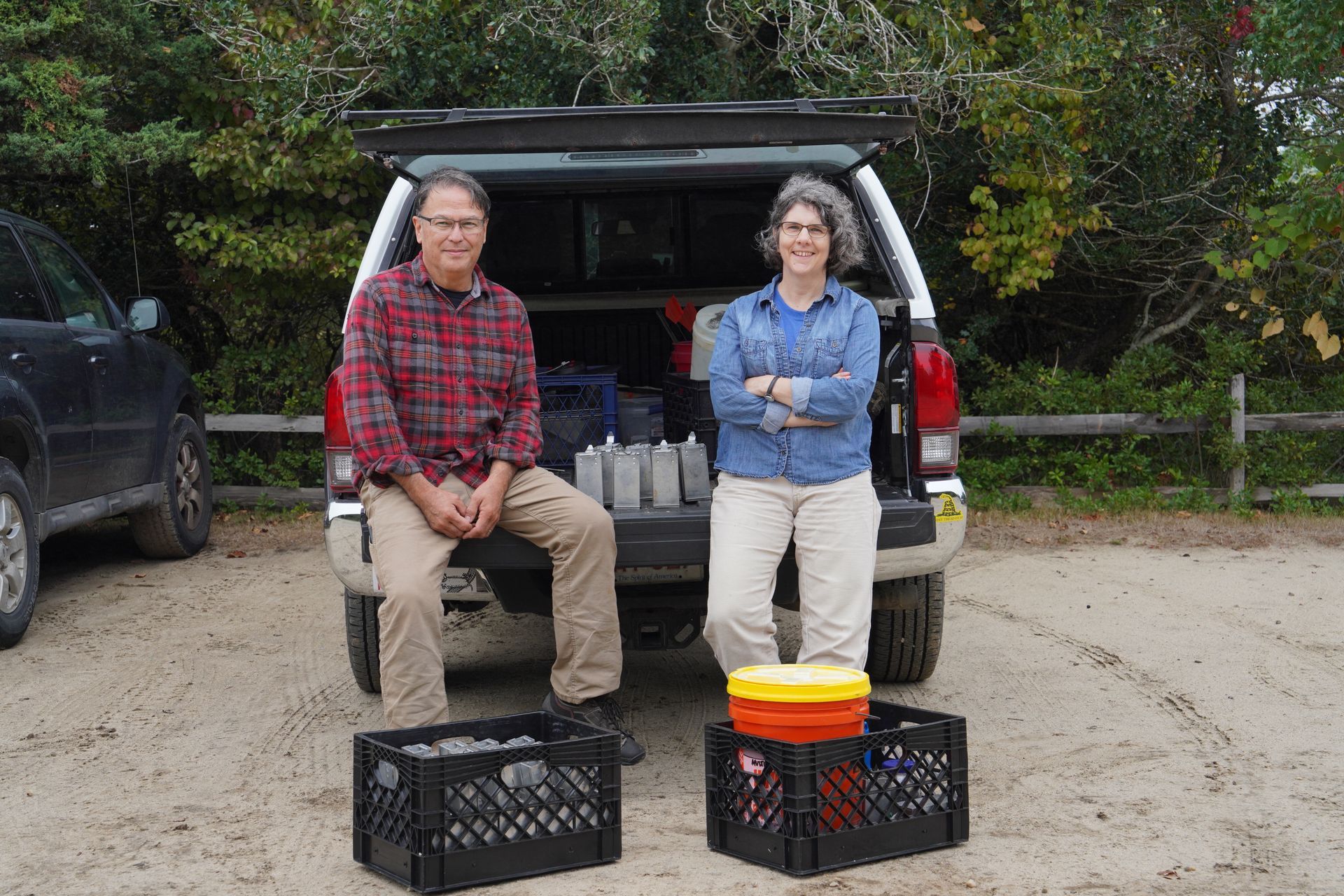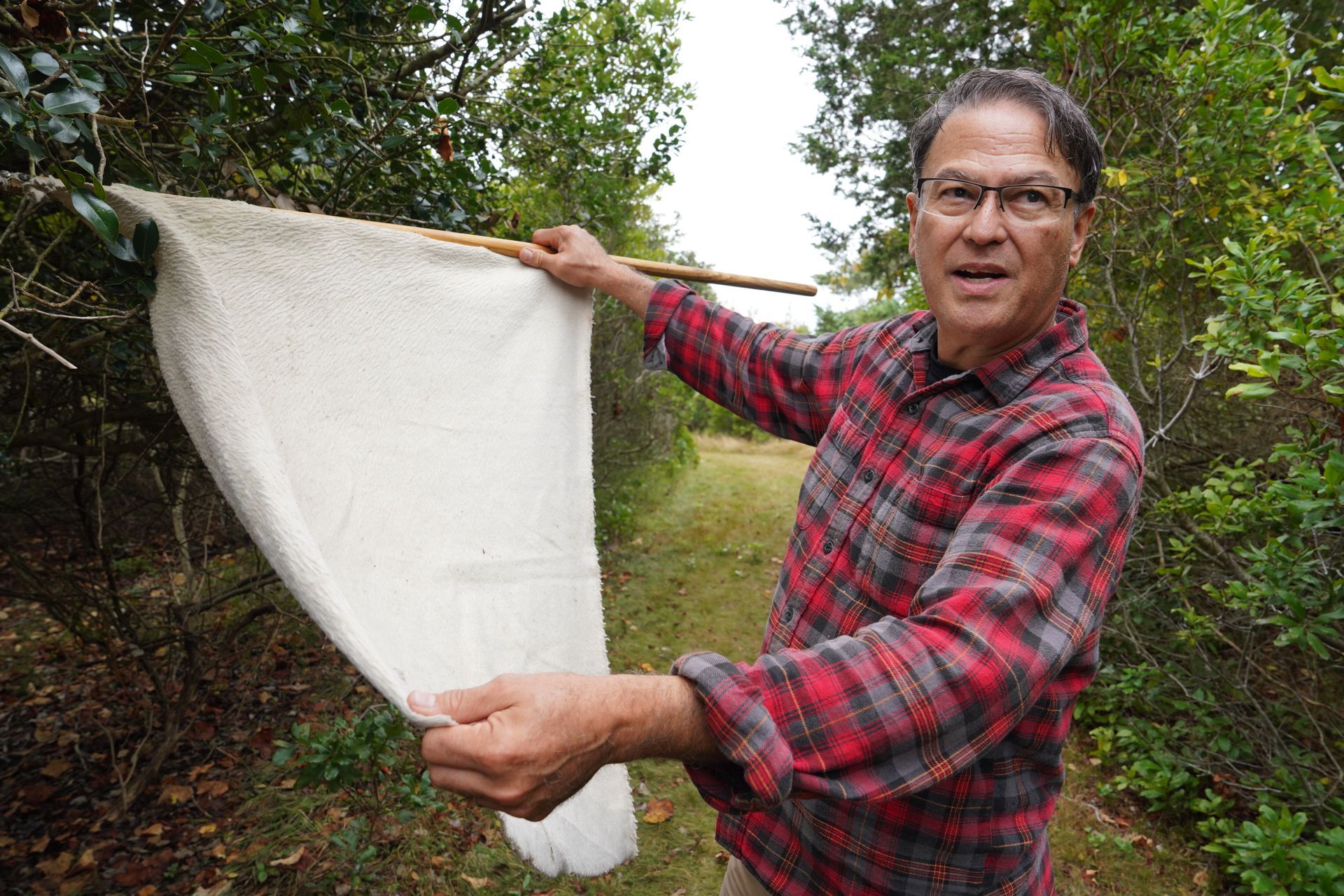Is it Time to Cull the Herd?
Could killing the deer population curb Lyme disease?
Written by Brian Bushard
Photography by Kit Noble
It’s a staggering number—10,000 deer on Nantucket. If that number is true, as state officials estimate, that means the island has more than one deer for every two year-round residents and more than 200 deer per square mile. But it’s not that number alone that has ecologists scared. It’s the ticks they carry. “A female deer tick lays 2,000 eggs,” said Tufts University professor Sam Telford, who has been studying ticks on Nantucket since 1985. “I have personally picked off 99 engorged females from a single deer, and that represents only a week’s accumulation because it takes seven days for a tick to feed. If you extrapolate over the 16 weeks that adult ticks are usually around, you get 2,000—that’s the progeny from a single deer.”
Multiply that number by the 10,000 estimated deer on Nantucket and you end up with the most terrifying estimate of all: 31 billion ticks.
While it’s nearly impossible to know the real tick population, it’s safe to say Nantucket has a tick crisis. With the growing deer herd, cases of tick-borne illnesses, including Lyme disease, documented at Nantucket Cottage Hospital have risen, as have deer-on-vehicle collisions reported to the Nantucket Police Department. Not only that—ask any farmer, landscaper or ecologist and they’ll tell you about the scourge white-tail deer have been on island vegetation. For Todd Rainwater, a summer resident and a trustee of the Rainwater Charitable Foundation, the solution comes down to a simple transitive equation: No deer equals no ticks, and no ticks means no Lyme disease.
It might sound extreme, but Rainwater believes the only viable option when it comes to solving Nantucket’s tick problem is not just to hunt more deer, but to wipe out the entire deer population. “It feels to me like Bill Gates saying we should reduce polio a little bit in these other countries—no, we should wipe it all out. If we can remove [tick-borne illnesses] entirely, we should,” Rainwater said.
While it’s perhaps the most intensive option for solving the spike in Lyme disease, it’s far from the first proposal. Just this year, state regulators approved an extension to the deer hunting season on the island, allowing primitive firearm hunting (muzzleloaders or archery) through the end of January. The Nantucket Land Bank, meanwhile, is considering applying for a deer damage permit to take out deer eating up native island species on its properties. “When deer are actively seeking food, they’re probably changing the ecology of the island right under our noses without us knowing it because they’re preferentially eating species before moving on to other species in our fragile habitats,” Land Bank Executive Director Rachael Freeman said.

Researchers at MIT are also working on a project to release thousands of genetically modified mice that would be immune to Lyme disease. That project, which was the subject of a recent 60 Minutes segment, would not address the deer population, but rather the mice that serve as the primary host of the Lyme bacteria. Not all ticks carry Lyme disease, though they can contract it by biting an infected mouse. But if those mice are immunized to Lyme, as researchers propose, then uninfected ticks would remain uninfected, breaking the cycle of transmission.
All of these proposals are the result of a renewed sense of urgency to address tick-borne illnesses. Roughly 15% of island residents have contracted Lyme disease, which can cause fever, headache, fatigue and rash, and if untreated can spread to joints, the heart and the nervous system. The incidence rate of Lyme disease is now more than 22 times higher on Nantucket than the state overall. Nantucket also leads the state in cases of babesiosis and human granulocytic anaplasmosis, which are both spread by deer ticks. On top of that, the introduction of the lone star tick has sparked new concerns over tick-borne illnesses, including alpha-gal syndrome, an infection known to cause red meat allergies.
Look no further than Martha’s Vineyard for a sign of things to come—cases of alpha-gal on the Vineyard have climbed from two positive tests in 2020 to 523 positives from over 1,200 tests in 2024. Meanwhile, vehicle collisions with deer on Nantucket have soared over the past 15 years, from 29 in 2010 to 106 in 2021, according to the Nantucket Police Department. A record 110 reports of deer-on-vehicle collisions were made from July 2024 to June 2025—a number that Police Chief Jody Kasper believes is likely an undercount.
So is it time to cull the herd? It’s a strategy that has worked in other places. In the mid-1990s, Lyme disease had become so prevalent on Monhegan Island, in Maine, that contracting it was two-and-a-half times more likely on the island than it was across the rest of Midcoast Maine. Over a span of several years, researchers on Monhegan Island implemented multiple methods to address the issue, first by applying pesticides and then by spreading poison to wipe out the island’s rats—though that project ended abruptly after a dog became sick from attacking a poisoned rat. But just like Nantucket, the problem lay with the deer. In 1997, Monhegan residents voted to bring in a sharpshooter to kill off every last deer on the small island. Only two cases of Lyme disease have been reported there since.

Another project closer to home was conducted a decade earlier, with a herd of 52 deer on Great Island, a peninsula in Yarmouth, being wiped out—except for one doe that “evaded hunters and survived through 1986.” Without deer, the island vegetation “recovered strongly,” while the number of larval ticks “decreased precipitously” in the two years after the herd was killed, with larval tick numbers continuing to decrease gradually after that.
Telford, one of the researchers on the Great Island project, said that deer are the key to Lyme disease prevention. Without deer, there are no ticks. But killing the entire herd might not be necessary, he said, adding that even a reduction in deer density to the state-recommended 12 to 18 per square mile would go a long way to wiping out tick-borne illnesses on Nantucket. Telford’s target number is even smaller, at about six to eight deer per square mile.
“If you look, animals are not evenly distributed, so you have pockets of them here and there,” he said. “It’s the same problem with deer—they congregate in certain areas. With more and more animals, those areas get bigger and bigger until they coalesce and they’re all over the island. But if we have [deer] using half the space, then that space that used to be occupied by deer is no longer occupied by deer.”

It’s safe to say that thousands of years ago, when Nantucket was connected to the mainland, deer roamed the area freely, though when English settlers arrived on the island in 1659, there were no deer. It’s become an island legend that in 1922, fishermen spotted a buck floating in the Sound, rescued it from the water and brought it on the island, where it “seemed to have recovered from its exhaustion and was in good condition,” and was “taken on a truck out of town and set free in the pine-trees near the second milestone,” The Inquirer and Mirror reported at the time.
Fearing the deer, nicknamed Old Buck, was lonely, a number of does from Michigan were released over the next few years to provide the buck “companionship” and to “give the island, in due time, a small herd of the graceful creatures.” Fast-forward 100 years and Nantucket boasts the densest deer herd and one of the largest active deer hunts in the state. Last year, hunters on Nantucket killed 863 deer, just below the record 879 harvested the year before, but representing only a fraction of the island’s deer population.
“Controlling the herd is important, but if the herd is at 10,000, then shooting 800 isn’t going to make a big difference,” said Nantucket Cottage Hospital’s Dr. Tim Lepore, an expert in tick-borne disease. “We need to know what the real number is, because there’s a big difference with a population of 2,500, if you’re killing 800, versus a population of 10,000.”
If the state's deer population estimate is correct, then in order to reach the state’s recommendation of 12 to 18 deer per square mile, hunters would need to reduce the herd to roughly 900 deer. Martin Feehan, a deer and moose biologist at MassWildlife who made the estimate of 10,000 deer, said there are more steps that could be taken to increase the annual harvest. One idea is to open more properties to hunting. (All Land Bank and Nantucket Conservation Foundation properties are open to hunting, except for the Land Bank’s two golf courses, Burnt Swamp Trails, Cato Commons and Burchell Farm, and NCF’s Tupancy Links, Sanford Farm, Little Neck, Trot’s Hill, Squam Farm, Masquetuck and the UMass Field Station.)
“You really have to get the harvest to double or triple where it’s at currently to start seeing a decline in the population,” Feehan said. “That would have to persist for a long period of time to get the density down.”
Some hunters have proposed annual extensions to the hunting season, as well as the creation of a venison processing facility that could allow hunters to donate meat to island organizations like Nourish Nantucket. Seth Engelbourg, a naturalist educator at the Linda Loring Nature Foundation and a hunter himself, wants to see more hunting education and a general promotion of hunting with best practices for safety publicly available.
“As Nantucketers and as environmental stewards, we have a moral responsibility to be hunters, and unfortunately in our field, there has been a celebration of non-consumptive use, things like leave no trace, leave only footprints,” Engelbourg said. “Changing the narrative on that and saying, ‘We’re not going to force anyone to kill an animal but celebrate that this could be a good thing for the environment and not a bad thing’—that could make a huge difference on sustainability on Nantucket.”
Rainwater recognizes that killing every deer on Nantucket could be a hard pill to swallow. Wiping out the herd would effectively put an end to hunting, ending a hobby for year-rounders and a source of offseason tourism. There’s also the cuteness factor of deer, though Rainwater said that argument is “ridiculous.” “To the hunters, if we can get Tim Lepore on board, that’s a two-for-one,” Rainwater said. “We would have his buy-in as the doctor of all doctors on Nantucket, and he has connections to the hunting world.”
Lepore said he’s interested in the idea, though he admits buy-in would be a “radioactive issue” on the island. “Can you kill all the deer? No, you can’t,” he said. “It’s difficult to kill your way out of it because the deer are having twins and triplets. It is very difficult to affect them on that level, so the next level is controlling ticks. But each female tick is laying 2,000 eggs, so that is also difficult to control.”
There might not be a single solution to rid the island of tick-borne illness. The only thing everyone can agree on is that there is a critical problem, and if nothing changes, the number of deer and ticks will only increase. “In 500 years when the island sinks beneath the waves,” Lepore said, “the last thing will be a tick holding on to a piece of beach grass.”






